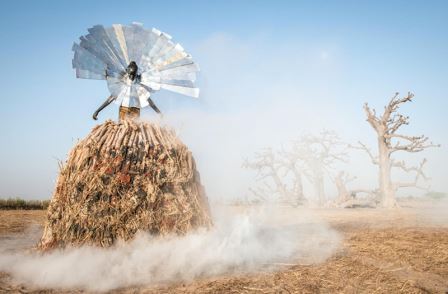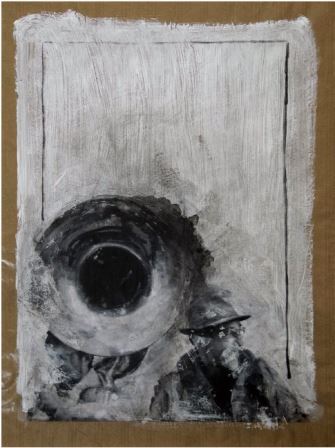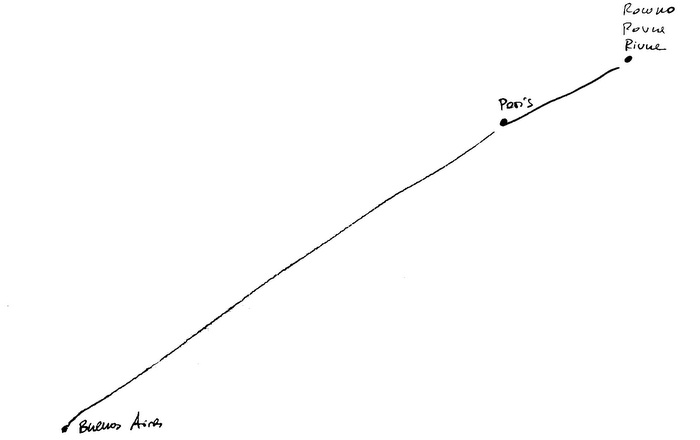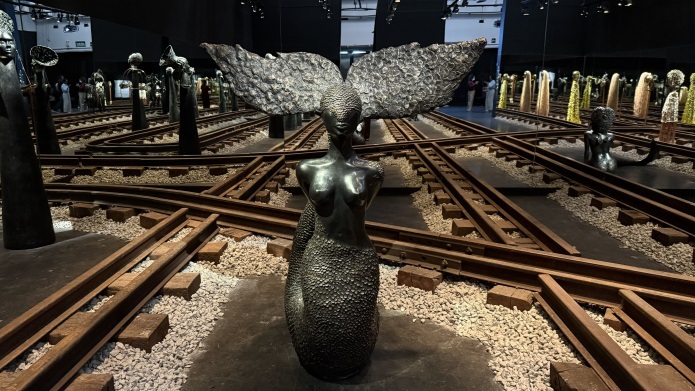
Fabrice Monteiro
Born from Beninese father and Belgian mother, Fabrice Monteiro brings the influence of both cultures to each of his works. As he doesn’t feel perfectly fit either of the two, the artist prefers to create his own world, which reflects his personality and history. Africa, with its culture, society and religion, is always his primary source of inspiration. The memories of religious ceremonies and Voodoo rituals from his Beninese childhood are reflected in the frequent presence of spirits in his photographs. Monteiro himself defines his approach as an ‘in-between,’ a bridge; keen to avoid exotic representations of Africa, he maintains his personal and multicultural perspective, and the results are far from the classical images of Africa to which individuals may be accustomed.
But his projects are not only a bridge between two cultures: Monteiro, in fact, started his career as a model, and he reuses the codes of fashion in his work. As a result of these influences, his images are truly diversified, going from fashion to street photography. While the first kind of work is more artificial and conceptual, with a lot of mise-en-scène, the second one is more documentary, but still conceived with a precise objective.

Andrew Tshabangu
Andrew Tshabangu’s career as a photographer spans more than 20 years. Through his ever-present lens, he has transported viewers to various enigmatic locations. Tshabangu explains that he stumbled on photography by accident. During the late 1980s, Tshabangu applied to the Department of Drama at the University of the Witwatersrand. He did not get accepted, but, did find out that in order to get acceptance he could submit an artwork, photograph, or sculpture as part of his application. It was through this process that Tshabangu decided to apply at the Alexandra Community Art Centre. Tshabangu thought that by acquiring skills at the centre, it would allow him to create an artwork that he would be able to use as his application piece for Drama at the University of the Witwatersrand. Through the evolving nature of his studies at the Community Art Centre, Tshabangu’s, involvement with photography started. While at the Alexandra Community Art Centre, Tshabangu continued with photography because as he explains “it’s easy to just press a button”.
Little did he realise that this thought would change his life. After his studies at the Community Centre Tshabangu started freelancing for New Nation (a publication now discontinued). It was through working for New Nation that Tshabangu realised that he needed to break away from photojournalism and become an independent photographer.

Jonathan Hindson
Jonathan Hindson, South African born and French-based artist will be exhibiting a body of works that was previously exhibited at Gallery MOMO Johannesburg, titled ‘Home’.
For the exhibition Hindson explains that the artworks that he has created “refer to some aspect of a place I could, or would like to, or wish to, call ‘home’ - be it a country, a family or a social context”. Hindson grew up in Johannesburg during the 60s and 70s; he left for France when he was 11 years old. “I came back to visit my family twice, and then after 1980, I didn’t come back to South Africa for another 32 years”. He explains that he sometimes thinks of himself as a “time capsule”.
When he returned to South Africa from France, he was asked whether South Africa had changed: “I would first have to explore what has changed the most: The country or myself?”
“The feeling of belonging is quite strange and unpredictable. Why should one feel at home in a place that has been getting along with its business without even noticing an absence?” Hindson notes that one can only remember something once and from then on, what we remember is the mental image of what has been remembered.
“When I start with a picture, I don’t really know where it will take me. I guess that what I call deconstructing a picture is a process of expecting it to talk back. The final painting is the result of a long, sometimes heated or candid discussion between the picture and me”.















